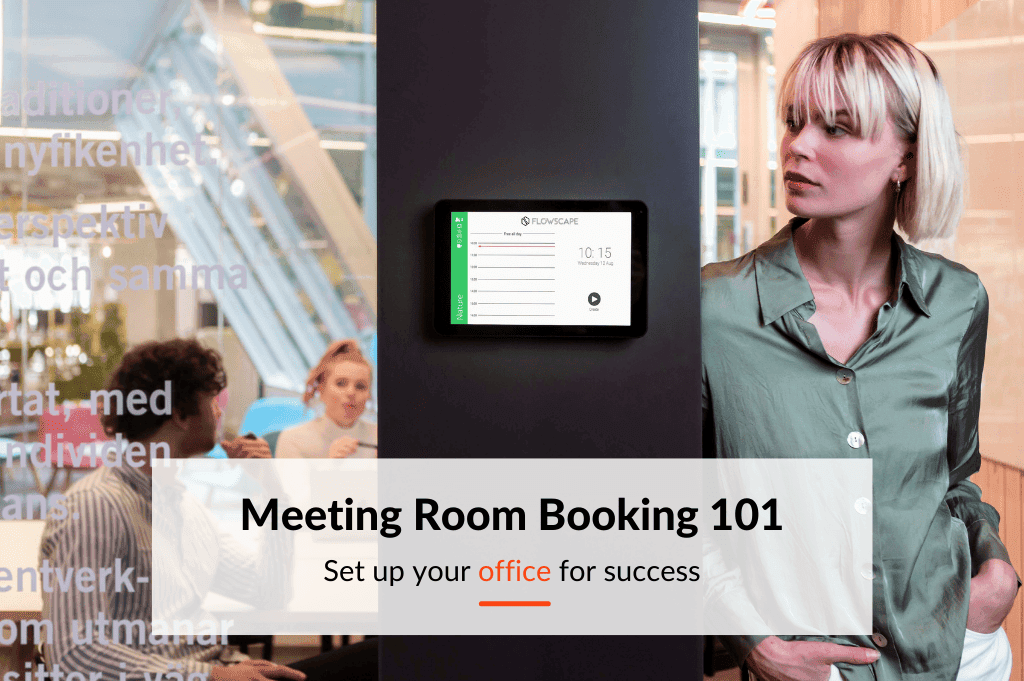Creating the best room booking experience for your business is essential, but the plethora of choices can be a hurdle even for the people most familiar with Smart office Solutions. Because every business is unique, one solution does not fit all. Luckily, there are some easy tricks that can help you in the process and prepare you for a discussion with our consultants.
Ultimately, we are here to make sure you find the solution that suits your business. In this blog post, we present four questions that are good to keep in mind before starting your room booking journey.
What is your goal with using Room Booking?
As with any type of change that we are trying to implement, it is important to set a clearly defined and specific goal with adapting a new room booking solution. One concrete example of a goal can be to enhance the employee experience by providing tools that make resource management easy and time efficient. Another tangible goal can be to receive important data on resource usage to support future layout changes.
Especially after the covid-19 pandemic, many companies are looking for solutions that can help them reduce office space due to remote working. In contrast to the general perception, Room Booking solutions can do more than just optimize room booking, it can also help you adapt your office to future office changes, you can read about post-covid strategies for offices here.
What type of office are you seeking to create?
After we have made the goal with our new room booking solution clear, we need to think about the vision we have for our office space now and for the future. The room booking solution needed depends heavily on what type of office layout you have or are currently thinking about implementing.
One example of this is the difference between traditional offices and activity-based offices. Traditional offices generally do not separate areas after activities, and therefore, all rooms at the office can be programmed to function the same. However, if you have an activity-based office, areas, rooms, and desks will cater to a certain activity, which means that you will probably want to add different booking capabilities, equipment etc.
What is an activity-based office? Read out blog post about it here.
For a traditional office, you can use outlook plug-in and room panels for the best effect. For activity-based offices, you will need to examine the different sensor options that allows you to be more flexible in how availability can be displayed through the Flowmap. We call this “Room Type Selection” which we will go though in more detail below.
What types of rooms do you have in your office?
Now when we have our goal and office type clear and ready, its time to discuss room types. There are multiple ways in which you can manage meeting rooms at your office. The most common room types used in medium to large office environments are Drop-in rooms, Bookable rooms, and Blocked rooms. Each one has their own benefits.
What are Room Types? Read our blog post about it here.
Room Type will determine which solution you need for each individual room. For example, drop-in rooms are not bookable, so sensors are needed to still be able to indicate availability. If you have large meeting rooms, you will need other types of sensors than for smaller rooms. If available, bring a summary of all room types at your office (present or future) to your meeting with our consultants.
How many employees do you have?
So far, we have discussed goals, office type and room types, which leaves us with our last question to keep in mind - the size of your business. The number of employees is a very important metric and is a big influence when deciding on a room booking solution.
Large offices with many employees need a broad solution that assists personnel with wayfinding, colleague finding, booking, fault reporting, and much more. Kiosk Screens and indoor positioning are two examples of solutions best suited for large offices. These functions are generally not needed for small offices where employees know where the meeting rooms are, usually does not have the same issues with finding colleagues or wayfinding around the office.
Make sure to keep the size of your office and the number of employees in mind when discussing with our consultants. Adapting a to comprehensive solution for a small company will be a waste of money and resources. In contrast, adapting a restricted solution for a large company will fail to solve the problems at hand. Make sure to provide our consultants with information about the number of employees and the size of your office.
Read more
Download our Room Booking Brochure!
Get more information about our software solution for better space planning for meeting space and room usage.
